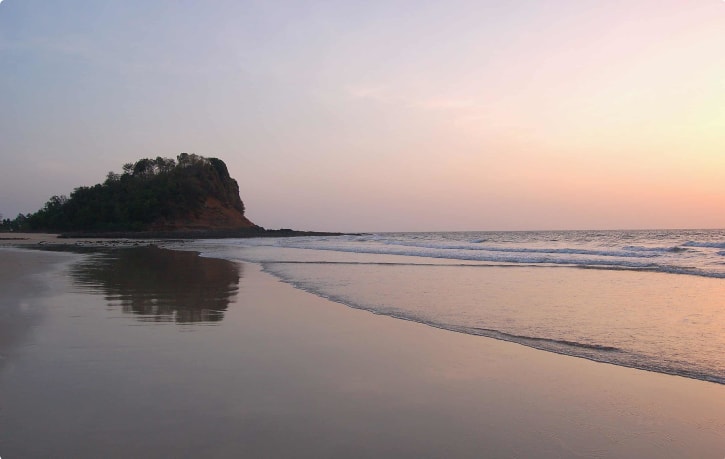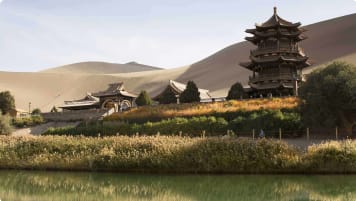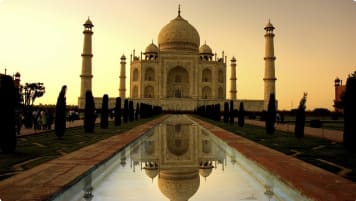Mumbai, India
Mumbai, India Chhatrapati Shivaji Maharaj Terminus (formerly Victoria Terminus), Mumbai. One of the world’s great metropolises, Mumbai (formerly Bombay) is India at its most vibrant; a city of contrasts, where Bollywood stars and finance billionaires…
18 Feb 20 · 4 mins read

Mumbai, India

One of the world’s great metropolises, Mumbai (formerly Bombay) is India at its most vibrant; a city of contrasts, where Bollywood stars and finance billionaires live in luxury, and those left behind populate Dharavi, the world’s largest slum. The financial, commercial, and entertainment capital of the subcontinent, Mumbai is the energetic heart of modern India.
The city of Mumbai has an ancient history. Settlements here date back to the paleolithic, while the city was a centre of maritime trade with Persia and Egypt dating back to 1000 BC. To the ancient Greek geographer Ptolemy it was known as Heptanesia. From AD 450 to 750, the city’s Hindu rulers created the cave temples on Elephanta Island (Gharapuri), home to some of India’s most impressive temple carving.
In 1348 the city was captured by the Muslim Sultan of Gujarat. In 1534 it was seded to the Portuguese, before coming under British rule as part of the dowry of the Portuguese princess Catherine of Braganza, who married Charles II in 1661. At first, Mumbai was not a great asset to the British government compared to Kolkata (Calcutta) or Chennai (Madras) on the east coast of India, but in the 19th century – following the decay of Mughal power and instability in Gujarat that brought merchants and traders to the island – the city grew rapidly. By 1860, the city had become the largest cotton market in India and had a population to match.
As the population increased, unsanitary and cramped conditions spread. In 1896 plague broke out. In response, the City Improvement Trust developed an ambitious plan to reclaim 1,300 acres of land from the sea – a plan not to be completed until World War Two.
The twentieth century saw Mumbai continue to grow, with rapid suburbanisation. Today, Mumbai has a population of around 19.98 million, making it the seventh most populous city in the world and the second-biggest in India (after Delhi). As the richest city in India, Mumbai draws migrants from around the nation, seeking opportunities in finance, commerce, or hoping to find fame in Bollywood, the world’s biggest film industry.
The relatively recent growth of Mumbai means that the majority of buildings in the city date to the Victorian and modern eras. In the Victorian era, grand buildings were built in Gothic Revival and Indo-Saracenic style, which blended Hindu, Mughal, and European neo-Gothic forms. Particular architectural highlights include the Chhatrapati Shivaji Maharaj Terminus (better known as the Victoria Terminus), an exuberant and memorable melange of buttresses, towers, turrets and spires, melding Islamic and European forms. Chhatrapati Shivaji Maharaj Vastu Sangrahalaya, built in Indo-Saracenic style by George Wittet, is Mumbai’s biggest and best museum and art gallery. Wittet also designed the Gateway of India, a grand monument built in 1924 to commemorate the 1911 visit of King George V and Queen Mary, the first British monarch to visit India.

Mumbai’s most popular tourist landmark is probably the Taj Mahal Palace, a grand hotel built by the Parsi industrialist JN Tata in 1903, supposedly because he had been denied access to nearby European hotels on account of being a ‘native’. The hotel has since played host to several important events in modern Indian history. It was the first hotel in India to employ women, the first in Asia to be air conditioned, and in the late 1960s, was home to India’s first nightclub. Lord Mountbatten announced Indian independence from the front steps. Famous guests have included George Bernard Shaw, Aldous Huxley, Jacqueline Kennedy Onassis, John Lennon and Yoko Ono, and more recently, Barack Obama.
Tragically, in 2008, the Taj Mahal was one of the major sites of the terrorist attacks on the city. Gunmen barricaded themselves in the hotel, letting off bombs and shooting guests. Despite knowing every exit route from the hotel, the entire 1, 500 members of staff stayed at their posts, doing their bit to protect guests and provide information to law enforcement about the terrorists. Their heroism was the subject of the 2018 movie, Hotel Mumbai.
Something that surprises many visitors to the city is that Mumbai is home to the world’s second-largest number of Art Deco buildings, after Miami in the United States. Colourful Art Deco buildings can be found along the 3.6-kilometre long Marine Drive promenade and in South Mumbai’s affluent Malabar Hill district. Though neglected for many years, a campaign led by local architects has seen Mumbai’s Art Deco recognised as a UNESCO World Heritage Site, while jazz age Mumbai can now be toured on a walking tour with a local guide.
At the same time, make sure to delve into Mumbai’s pre-European history at the Siddhivinayak Temple, built in 1801 in honour of Lord Ganesh. The Kanheri Caves, Buddhist landmarks dating from the 1st century BC to the 11th century AD are one of the wonders of India, and are easily accessed on a day tour from Mumbai.
If the frantic energy of Mumbai gets too much for you, make time for a trip to the rural hinterland. Potential day trips include the beautiful hill stations of Lonavala-Khandala, prominently featured in Bollywood movies, and peaceful Matheran, where you can take a scenic train trip overlooking the landscapes below. For a beach getaway, head to Alibaug, a perfect stretch of sand overlooked by coconut and cypress trees.

Articles about India published by Odyssey Traveller.
- India’s Mughal Empire
- Clash of the Mughals and the Marathas
- History of British Rule in India
- Discovering India
- Taj Mahal, India
- Asian Empires Throughout History
- Top 20 World Heritage Sites You Must Visit
For all the articles Odyssey Traveller has published for mature aged and senior travellers, click through on this link.
External articles to assist you on your visit to India.
- Incredible India
- Learn a craft in India, Asia’s Creative Hub
- The History of the Kanheri Caves, Mumbai
- Story of cities #11: the reclamation of Mumbai – from the sea, and its people?
- The Taj Mahal Palace: The Decadent Hotel that Was Home to India’s First Ever Nightclub
- Peek into the world’s most beautiful Art Deco buildings in Mumbai


